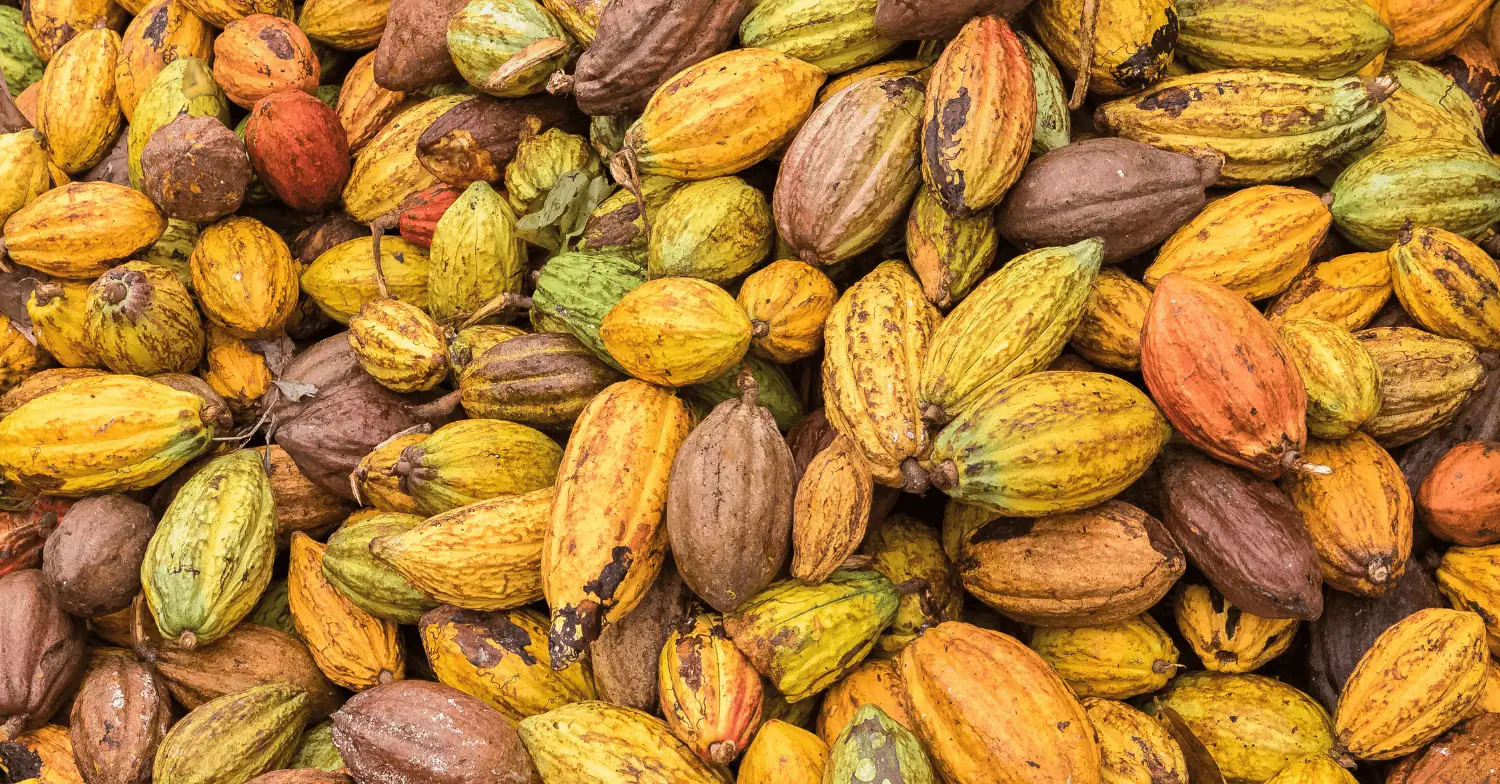July 8, 2025 – Market analysis
The cocoa futures market is experiencing significant volatility as traders grapple with two conflicting forces: improving weather conditions in West Africa and mounting uncertainty around U.S. trade tariffs. This complex market dynamic is reshaping how industry participants approach risk management and pricing strategies.
Weather improvements drive price corrections
Cocoa futures have declined materially over the past week, with September contracts in London falling 9.6% and New York futures dropping 9.2%. The primary catalyst has been consistently favorable weather conditions across West Africa’s key growing regions, raising optimism about the 2025/26 crop outlook.
“Weather in West Africa has been fine still, making market participants optimistic about next year’s crop,” according to recent market analysis. This weather relief comes after previous seasons marked by drought and excessive rainfall that severely impacted production in Ivory Coast and Ghana.
Tariff uncertainty creates additional headwinds
The cocoa market faces a second major pressure point from potential U.S. tariff policy changes. Agricultural Secretary Brooke Rollins recently indicated that goods “that can’t easily be grown inside the US, such as cocoa beans or coffee” might be exempt from across-the-board tariffs.
This policy uncertainty is creating a double impact on futures markets:
- Potentially reducing demand for relatively expensive New York futures
- Decreasing the risk premium associated with physical delivery concerns
- Adding macroeconomic uncertainty as tariff implementation deadlines approach
Structural supply challenges persist
Despite near-term weather improvements, the cocoa market continues to face longer-term structural challenges. Key producing regions are still recovering from years of underinvestment, disease pressure, and climate-related disruptions.
Ghana’s production struggles: Ghana has revised its harvest forecast downward to 600,000 metric tons due to swollen shoot virus disease and weather impacts. The country is also planning to start its 2025/26 season two months early to prevent cross-border smuggling.
Ivory Coast developments: Forward sales for the 2025/26 season remain significantly behind previous years, with only 680,000-750,000 metric tons sold compared to 1.5 million tons over the same period last year.
Demand destruction continues
High prices throughout 2024 and early 2025 have triggered substantial demand destruction across the chocolate industry. Manufacturers are implementing various strategies to manage cost pressures:
- Shrinkflation and product reformulation
- Promotion of non-chocolate product categories
- Delayed product launches and promotional activities
Industry analysts forecast a 4.8% demand decline for the current season, following a 3.8% drop in the previous year.
Trading model transformation
The extreme price volatility has forced fundamental changes in how cocoa is traded. Traditional longer-term hedging strategies are being abandoned in favor of shorter-term, more flexible approaches.
“Traders have now completely changed their way of working,” with many reducing pre-hedged positions from 18 months to just 4-5 months maximum. This shift toward spot trading is reducing market liquidity and potentially increasing price volatility.
Investment implications
The cocoa market’s current dynamics present both opportunities and risks for market participants. While weather improvements offer some price relief, the combination of structural supply issues, demand destruction, and policy uncertainty creates a complex trading environment.
Key factors to monitor:
- West African weather patterns through the critical growing season
- U.S. tariff policy developments and implementation timelines
- Demand recovery signals from chocolate manufacturers
- Exchange stock levels and open interest trends
Looking ahead
The cocoa market appears to be at a critical juncture where short-term relief from weather improvements must be balanced against longer-term structural challenges. The outcome of current policy uncertainties and the pace of demand recovery will likely determine whether current price levels represent a sustainable correction or a temporary pause in the broader volatility trend.
For the full week 28 Cocoa market analysis access the Vesper platform here: https://app.vespertool.com/market-analysis/2080
